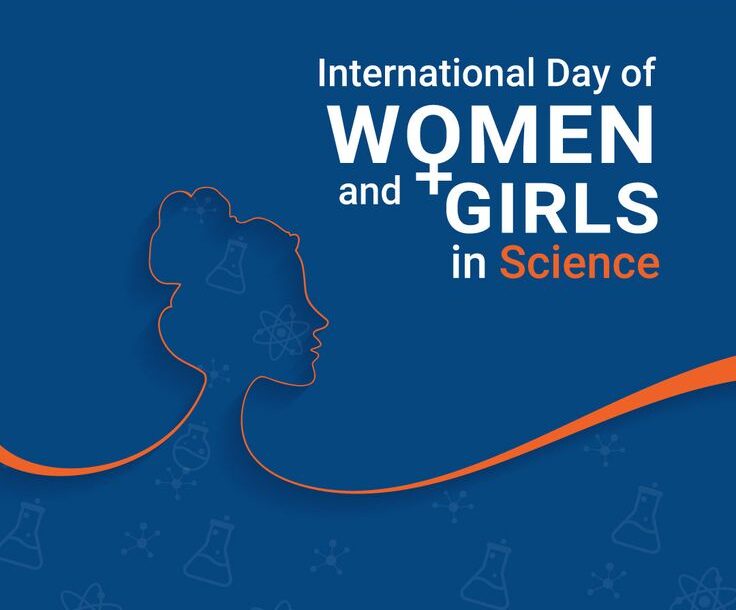10 Powerful Reasons Why International Day of Women and Girls in Science Matters
International Day of Women and Girls in Science, observed every year on February 11, is a global initiative to highlight the importance of gender equality in science, technology, engineering, and mathematics (STEM). This day celebrates the achievements of women and girls in these fields and calls for more action to break down barriers preventing women from fully participating in science and research.
What is International Day of Women and Girls in Science?
The International Day of Women and Girls in Science was declared by the United Nations in 2015, as part of the 2030 Agenda for Sustainable Development. The goal of this day is to recognize the critical role women and girls play in advancing science and technology. It is also aimed at addressing the gender gap in science and ensuring that women and girls have equal access to opportunities, education, and recognition in scientific fields.
History of International Day of Women and Girls in Science
- 2015: The United Nations General Assembly adopted the resolution declaring February 11 as International Day of Women and Girls in Science. This marked the beginning of a global movement to encourage women and girls to pursue careers in science, technology, engineering, and mathematics.
- Role of UN Women: The initiative is supported by UN Women, who collaborate with other international organizations, universities, governments, and STEM companies to create platforms for women to excel in science-related fields.
- Challenges Addressed: Throughout history, women and girls have been underrepresented in science and technology careers, and this day aims to challenge stereotypes, improve access to STEM education, and close the gender gap in science.
Daily Life Impacts of Women in Science
The contributions of women in science have shaped modern life in profound ways. From medicine and public health to technology and environmental science, the daily lives of billions of people are improved thanks to the work of women scientists.
- Health Advancements: Women in science have been integral to groundbreaking medical research. Female researchers have made essential contributions to the discovery of life-saving drugs, vaccines, and treatments for diseases like cancer, HIV/AIDS, and malaria.
- Technology and Innovation: Women scientists, engineers, and innovators have made significant advancements in technology. From software development to space exploration, their work has impacted our digital lives and technological progress.
- Environmental Impact: Many women scientists have dedicated their careers to environmental conservation, climate change research, and sustainable development. Their research is pivotal in addressing global challenges such as pollution, resource depletion, and biodiversity loss.
- Inspiring Future Generations: Women in science serve as role models and mentors for young girls and aspiring scientists. By pursuing careers in science, they encourage others to follow in their footsteps and contribute to the scientific community.
Key Facts About Women and Girls in Science
- Underrepresentation: Women and girls remain underrepresented in STEM fields. According to UNESCO, women make up less than 30% of the world’s researchers. This statistic highlights the need for more targeted efforts to encourage and retain women in science-related careers.
- Challenges Faced: Women in science face numerous barriers, including gender biases, lack of mentorship, unequal access to funding, and challenges related to work-life balance. These barriers often prevent women from achieving their full potential in the scientific community.
- Empowering Women in Science: Women scientists have made immense contributions across various scientific fields. For example, Marie Curie became the first woman to win a Nobel Prize, and Rosalind Franklin played a crucial role in the discovery of DNA’s structure. Their legacies continue to inspire countless women pursuing scientific careers today.
- Education and Opportunity: Encouraging girls to pursue STEM education and careers is essential to ensuring gender equality in science. Studies have shown that when women have equal access to education and opportunities, they contribute significantly to scientific innovation and discovery.
- Global Initiatives: Several organizations and initiatives, such as UNESCO’s STEM and Gender Advancement (SAGA) program, are dedicated to supporting women and girls in science. These programs provide scholarships, mentoring, and training to help close the gender gap in scientific fields.
How is International Day of Women and Girls in Science Observed?
- Educational Events: Schools, universities, and scientific organizations host events on this day to celebrate the achievements of women scientists. These events often feature talks, presentations, and panels highlighting the contributions of women to science and technology.
- Social Media Campaigns: On February 11, various organizations and individuals share inspiring stories of women in science on social media platforms. Hashtags like #WomenInScience and #GirlsInScience trend globally, creating awareness and sparking discussions about gender equality in STEM fields.
- Public Celebrations and Recognition: Many countries and scientific institutions organize public events, exhibitions, and award ceremonies to recognize the work of female scientists and researchers.
- Promoting Mentorship and Networking: Scientific institutions often organize networking events and mentorship programs to support young girls and women in science. These initiatives connect young aspiring scientists with established mentors who can offer guidance and advice.
Significance of International Day of Women and Girls in Science
- Addressing Gender Inequality: This day is a reminder that gender inequality in science is still prevalent and that concerted efforts are required to create an equal playing field for both women and men in scientific fields.
- Inspiring the Next Generation: Celebrating women and girls in science serves as an inspiration to the next generation of scientists. It encourages young girls to dream big and pursue careers in STEM, knowing that they too can make an impact on the world.
- Advancing Innovation: A diverse scientific community is essential for driving innovation. By increasing the representation of women in science, we can foster creativity, new ideas, and fresh perspectives, which are vital for solving global challenges.
- Building a More Inclusive Society: By acknowledging and promoting the achievements of women in science, we move closer to a world where gender does not limit anyone’s potential. This helps create a more inclusive society where both men and women contribute equally to scientific progress.
Wishing and Spreading the Message on International Day of Women and Girls in Science
- “Happy International Day of Women and Girls in Science! Today, we celebrate the incredible achievements of women in STEM and continue to empower future generations to break barriers and innovate.”
- “To all the women and girls in science—thank you for your contributions and for inspiring us all. Let’s continue to push boundaries and build a more equitable future!”
- “On this International Day of Women and Girls in Science, let’s remember that every discovery and advancement is made stronger when we include everyone. Together, we can make the future brighter!”
Conclusion
International Day of Women and Girls in Science is an essential observance that calls for increased gender equality in the scientific community. It celebrates the incredible contributions of women scientists and encourages young girls to pursue their passion for science, technology, engineering, and mathematics. By empowering women and girls in science, we pave the way for innovation, equality, and progress, making the world a better place for all.











I am continually looking online for posts that can aid me. Thx!